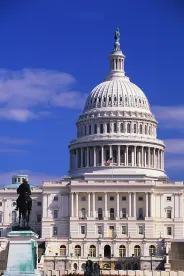On December 7, the Office of Management and Budget, the Department of Labor, and the Office to Monitor and Combat Trafficking in Persons in the Department of State, issued a proposed memorandum titled “Anti-Trafficking Risk Management Best Practices & Mitigation Considerations.” The document is intended, at least in part, to “promote clarity and consistency in the implementation of anti-trafficking requirements” imposed by Executive Order 13627, Title XVII of the FY 2013 National Defense Authorization Act, and the implementing regulatory provisions applicable to all federal contractors at FAR 22.17 and FAR 52.222-50. Although the guidance document is in draft form, it is important for contractors to consider closely because it (1) outlines the government’s contemplated expectations on anti-trafficking risk mitigation, and (2) informs agencies that they may immediately take the contents of the memorandum “into consideration in applying the anti-trafficking requirements in the Federal Acquisition Regulation.”
In addition to reiterating the basic requirements of the anti-trafficking FAR rule, the memorandum outlines a series of “best practices and mitigation considerations” designed to inform contracting officers’ assessments of whether contractors are effectively carrying out their compliance responsibilities. Although the guidance states that it is “not intended to augment or otherwise change existing regulatory requirements,” it does specify that, in the event the government becomes aware of a trafficking violation, a contractor’s compliance with the practices identified in the guidance are to be construed as mitigating considerations weighing in the contractor’s favor.
Thus, although a contractor’s basic compliance responsibilities under FAR 52.222-50 may technically remain unchanged, in the event that the contractor has to notify the contracting officer and the agency Inspector General of credible information of a trafficking violation, then its implementation of the practices identified in the memorandum could be directly relevant in determining whether the government will exercise any of the numerous contractual remedies outlined at FAR 52.222-50(e). This is especially important because the prime contractor’s reporting obligations at FAR 52.222-50(d) apply to events that occur anywhere in its supply chain, and do not distinguish between technical and severe violations of the prohibitions.[1] Additionally, a contractor’s compliance with the practices outlined in the guidance may favorably impact an agency’s past performance report for “contracts where the risk of trafficking was significant.”
Further, although FAR 52.222-50(h)(1) limits contractor responsibility for developing and implementing anti-trafficking compliance plans to overseas work exceeding $500,000, the guidance notes that “domestic contractors are strongly encouraged to develop procedures and controls consistent with the best practices identified in [the memorandum], which . . . may act as a mitigating factor if a violation occurs.” This guidance stops short of expressly requiring compliance plans from all domestic contractors, but the guidance’s reference to compliance plans as the “management blueprint” for the aforementioned procedures and controls suggests that domestic contractors which do not develop and implement such plans put themselves at greater risk should a violation occur.
Key aspects of the memorandum’s proposed best practices are outlined below:
-
Best Practices for Contractor’s Internal Compliance Measures:
-
Establish an “accountable official,” by identifying an internal individual and position to have direct responsibility for implementation of the company’s anti-trafficking compliance plan.
-
Review internal practices around fraud prevention and coercive practices, and develop codes of conduct or corporate policies on hiring recruiters and conducting recruitment, disciplining employees that commit violations, complying with host country employment laws and housing, and generally ensuring that no prohibited activity takes place.
-
Implement a documented training program for internal employees on anti-trafficking requirements under the rule, and implement a whistleblower protection mechanism that allows reporting without fear of retaliation.
-
Develop a “living” compliance plan that can be tailored based on the level of risk for an individual contract and new practices.
-
-
Best Practices for External (i.e., Supply Chain-Focused) Compliance Measures:
-
“[M]ap out supplier relationships in the various tiers of [the] supply chain,” and identify the high risk portions of supply chains through utilizing risk screening tools or procedures, such as “third party audits, external consultants or experts, or other mechanisms.”
-
Disseminate a code of conduct throughout the supply chain, along with awareness training and direct engagement to ensure that subcontractors understand compliance expectations.
-
Verify that subcontractors are directly hiring workers or using licensed recruiters, that they have valid whistleblower protections in place, and that they are not charging their employees recruitment fees.
-
Ensure that supplier auditing processes are “recurring . . . unannounced, and validated . . . externally.” Review and, if necessary, revise contractor compliance plans, codes of conduct, training, and reporting mechanisms on a set schedule, and with external validation, if possible.
-
Work with suppliers to implement information reporting processes for high-risk supplier sites, and develop corrective action plans for addressing known supplier risks. Monitor progress against any corrective action plans through reporting, direct observance, and follow-up audits for nonconforming supplier sites.
-
-
Mitigation Considerations: Finally, when reviewing reported incidents, the guidance instructs contracting officers to consider, as mitigating factors, whether a contractor: remediated a violation on its own, became aware of the violation because of an effective monitoring program, immediate reported the incident cooperated with investigations, was a new entrant to the federal marketplace, and whether it generally complied with the policies outlined in the memorandum.
Although the guidance is intended to create certainty, it also raises some new questions of its own. Among the mitigation considerations identified in the guidance are whether the contractor is a “new entrant” to the federal marketplace and whether a violation is “minor and technical in nature.” The suggestion here is that contracting officers may be more forgiving of “minor an technical” violations committed by “new entrants,” but neither of these standards is defined or explained, and it therefore remains unclear what might qualify as “minor,” “technical,” or “new.”
More broadly, the guidance also leaves contractors to grapple with the same questions that they have always faced under the rule — chiefly, the extent to which they should implement protective measures into their company and into their supply chains. Simply issuing a single set of “best practices” to all contractors, without providing accompanying guidance on how contractors are to evaluate the costs and benefits of such measures in light of their own particular circumstances, may be doing the government a disservice. When faced with the decision of whether to implement a myriad of compliance obligations, contractors may simply adopt either an all or nothing viewpoint. What the community needs is a deeper understanding of how to calibrate and scale these practices to meet the needs of particular businesses, an approach that the FAR highlights.[2] In a passing footnote, the guidance recognizes that a contractor’s compliance plan need only be “suitable to address the nature and scope of activities to be performed and the size and complexity of its contract work,” but this statement is in tension with the guidance’s presentation of a single, fixed set of best practices.
Ultimately, this guidance requires contractors to carefully evaluate their approaches to managing compliance with the FAR human trafficking rule. On one hand, some of the best practices identified in the guidance may present implementation challenges, especially for contractors with complex supplier relationships. On the other hand, adoption of these best practices could prove to be an enormously valuable risk mitigation measure, especially given that consequences of noncompliance can include termination for default and suspension or debarment.
The government is currently soliciting feedback on the draft guidance, and comments are due on January 9, 2017. Contractors would be well-advised to continue monitoring this issue closely as the government moves towards finalizing its guidance.[3]
[1] The guidance does, however, instruct contracting officers that they should take the severity of the violation into account when reviewing reported violations, and should consider whether the violation is “an isolated incident or is part of a systemic pattern of violations.”
[2] FAR 52.222-50(h)(2) specifies that:
The Contractor shall maintain a compliance plan during the performance of the contract that is appropriate – (i) To the size and complexity of the contract; and (ii) To the nature and scope of the activities to be performed for the Government, including the number of non-United States citizens expected to be employed and the risk that the contract or subcontract will involve services or supplies susceptible to trafficking in persons.
[3] While in government, Ryan Burnette served in the Office of Federal Procurement Policy, which participated in the development of the regulations and policies described in this guidance document.






 />i
/>i

